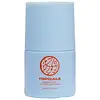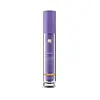What's inside
What's inside
 Key Ingredients
Key Ingredients

 Benefits
Benefits

 Concerns
Concerns

 Ingredients Side-by-side
Ingredients Side-by-side

Water
Skin ConditioningSalix Alba Bark Extract
AstringentGlycolic Acid
BufferingPotassium Hydroxide
BufferingPhenoxyethanol
PreservativePolysorbate 20
EmulsifyingCamellia Sinensis Leaf Extract
AntimicrobialCentella Asiatica Extract
CleansingGlycerin
HumectantSalicylic Acid
MaskingHydroxyethylcellulose
Emulsion StabilisingNiacinamide
SmoothingZinc PCA
HumectantAllantoin
Skin ConditioningDisodium Phosphate
BufferingSodium Phosphate
BufferingPolysorbate 60
EmulsifyingSodium Nitrate
SoothingGlyoxal
AntimicrobialPotassium Sorbate
PreservativeCitric Acid
BufferingSodium Benzoate
MaskingButylene Glycol
HumectantWater, Salix Alba Bark Extract, Glycolic Acid, Potassium Hydroxide, Phenoxyethanol, Polysorbate 20, Camellia Sinensis Leaf Extract, Centella Asiatica Extract, Glycerin, Salicylic Acid, Hydroxyethylcellulose, Niacinamide, Zinc PCA, Allantoin, Disodium Phosphate, Sodium Phosphate, Polysorbate 60, Sodium Nitrate, Glyoxal, Potassium Sorbate, Citric Acid, Sodium Benzoate, Butylene Glycol
Water
Skin ConditioningGlycerin
HumectantPolysorbate 20
EmulsifyingButylene Glycol
HumectantSodium Ascorbyl Phosphate
AntioxidantPhenoxyethanol
PreservativeGlycolic Acid
BufferingTocopheryl Acetate
AntioxidantAzelaic Acid
BufferingCaprylyl Glycol
EmollientLavandula Angustifolia Oil
MaskingMelaleuca Alternifolia Leaf Oil
AntioxidantSorbic Acid
PreservativeChamomilla Recutita Flower Extract
MaskingCamellia Sinensis Leaf Extract
AntimicrobialEuterpe Oleracea Fruit Extract
Coffea Arabica Seed Extract
MaskingLeuconostoc/Radish Root Ferment Filtrate
AntimicrobialDisodium EDTA
Water, Glycerin, Polysorbate 20, Butylene Glycol, Sodium Ascorbyl Phosphate, Phenoxyethanol, Glycolic Acid, Tocopheryl Acetate, Azelaic Acid, Caprylyl Glycol, Lavandula Angustifolia Oil, Melaleuca Alternifolia Leaf Oil, Sorbic Acid, Chamomilla Recutita Flower Extract, Camellia Sinensis Leaf Extract, Euterpe Oleracea Fruit Extract, Coffea Arabica Seed Extract, Leuconostoc/Radish Root Ferment Filtrate, Disodium EDTA
 Reviews
Reviews

Ingredients Explained
These ingredients are found in both products.
Ingredients higher up in an ingredient list are typically present in a larger amount.
Butylene Glycol (or BG) is used within cosmetic products for a few different reasons:
Overall, Butylene Glycol is a safe and well-rounded ingredient that works well with other ingredients.
Though this ingredient works well with most skin types, some people with sensitive skin may experience a reaction such as allergic rashes, closed comedones, or itchiness.
Learn more about Butylene GlycolCamellia Sinensis Leaf Extract is derived from the leaves of the tea plant. Black tea, green tea, and oolong tea are all harvested from this plant.
This ingredient has many skin benefits:
This ingredient contains polyphenols, a strong antioxidant. Antioxidants help fight off molecules that damage skin cells.
On top of that, the antioxidants in green tea neutralize free-radicals from the sun. This gives the skin some extra UV protection, but should not replace sunscreen.
Many components of tea have anti-inflammatory properties.
Polyphenols and L-theanine help soothe the skin and reduce irritation. The caffeine in Camellia Sinensis Leaf Extract helps calm inflamed blood vessels.
Other compounds found in tea include: Vitamin Bs, linoleic acid, magnesium, calcium, iron, and zinc.
Research has shown both drinking Camellia Sinensis Leaf Tea and applying it to the skin can help boost skin elasticity and hydration. Studies also show using tea extract may reduce sebum, or oil, production.
Learn more about Camellia Sinensis Leaf ExtractGlycerin is already naturally found in your skin. It helps moisturize and protect your skin.
A study from 2016 found glycerin to be more effective as a humectant than AHAs and hyaluronic acid.
As a humectant, it helps the skin stay hydrated by pulling moisture to your skin. The low molecular weight of glycerin allows it to pull moisture into the deeper layers of your skin.
Hydrated skin improves your skin barrier; Your skin barrier helps protect against irritants and bacteria.
Glycerin has also been found to have antimicrobial and antiviral properties. Due to these properties, glycerin is often used in wound and burn treatments.
In cosmetics, glycerin is usually derived from plants such as soybean or palm. However, it can also be sourced from animals, such as tallow or animal fat.
This ingredient is organic, colorless, odorless, and non-toxic.
Glycerin is the name for this ingredient in American English. British English uses Glycerol/Glycerine.
Learn more about GlycerinGlycolic Acid is arguably the most famous alpha hydroxy acid (AHA) with tons of research backing its benefits.
It is found naturally in sugar cane but the form used in skincare is usually synthetic for purity and stability.
Glycolic acid removes the top layer of dead skin cells to allow newer and fresher ones to emerge.
AHAs work by breaking down the structural “glue” that holds old skin cells in place. When that buildup is gone, your skin can renew itself more efficiently.
Research also shows glycolic acid stimulates collagen production, helping to firm and thicken the skin over time. This is one of its biggest advantages over other AHAs.
Overall, glycolic acid helps with:
Fun fact: Glycolic acid boosts skin hydration by helping it produce molecules that increase hyaluronic acid naturally.
To work best, glycolic acid products should have a pH between 3-4 (that’s where exfoliation is most effective but still gentle on skin).
The pH and concentration of a product are key to its effectiveness:
It is normal to feel a slight stinging sensation when using glycolic acid. This usually fades as your skin adjusts.
Because glycolic acid has the smallest molecular size in the AHA family, it can penetrate deeper, which enhances its effectiveness but also makes it more likely to irritate sensitive skin.
If your skin is very sensitive or prone to rosacea, glycolic acid may be too strong; in that case, try milder options like lactic acid or a PHA instead.
Recent studies suggest glycolic acid might even help protect against UV damage. But don’t skip sunscreen! Freshly exfoliated skin is more sensitive to the sun.
Glycolic acid is a skincare superstar. It smooths, brightens, hydrates, and firms the skin. Unless you’re highly sensitive, it’s well worth adding to your routine.
Read more about some other popular AHA's here:
Learn more about Glycolic AcidPhenoxyethanol is a preservative that has germicide, antimicrobial, and aromatic properties. Studies show that phenoxyethanol can prevent microbial growth. By itself, it has a scent that is similar to that of a rose.
It's often used in formulations along with Caprylyl Glycol to preserve the shelf life of products.
Polysorbate 20 is made by combining ethoxylation of sorbitan, ethylene oxide, and lauric acid. It is a mild cleansing agent, surfactant, and emulsifier.
As a surfactant, it helps collect dirt and oils for washing. Emulsifiers prevent oils and water from separating.
Polysorbate 20 also adds scent to a product. Since it is made using sorbitol, it has a sweet scent. Sorbitol can also be found in fruits such as apples and peaches.
The lauric acid used to create Polysorbate 20 is often derived from coconuts.
Polysorbate 20 may not be fungal acne safe.
Learn more about Polysorbate 20Water. It's the most common cosmetic ingredient of all. You'll usually see it at the top of ingredient lists, meaning that it makes up the largest part of the product.
So why is it so popular? Water most often acts as a solvent - this means that it helps dissolve other ingredients into the formulation.
You'll also recognize water as that liquid we all need to stay alive. If you see this, drink a glass of water. Stay hydrated!
Learn more about Water